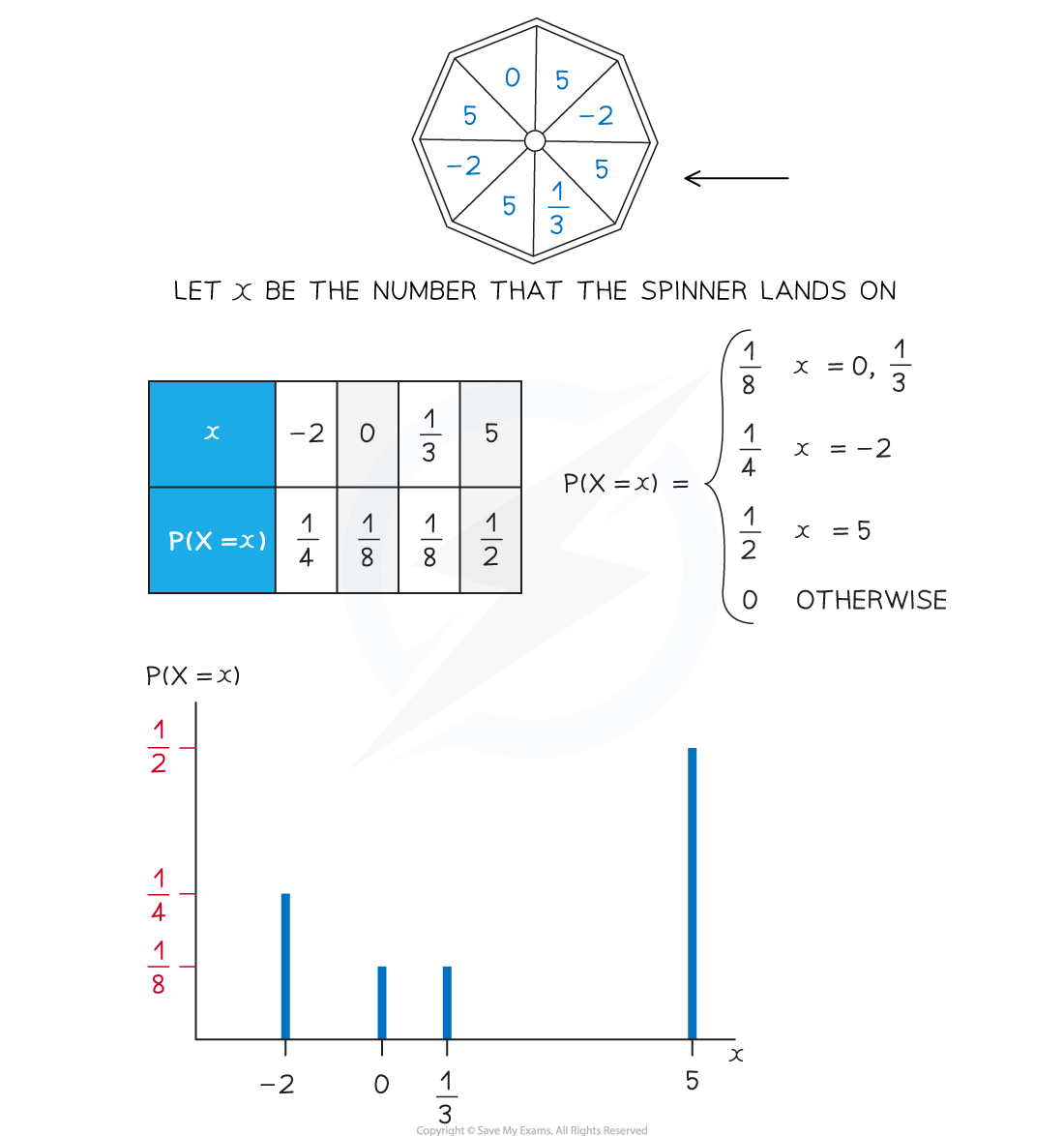- 翰林提供学术活动、国际课程、科研项目一站式留学背景提升服务!
- 400 888 0080
CIE A Level Maths: Probability & Statistics 1复习笔记3.1.1 Discrete Probability Distributions
Discrete Random Variables
What is a discrete random variable?
- A random variable is a variable whose value depends on the outcome of a random event
- The value of the random variable is not known until the event is carried out (this is what is meant by 'random' in this case)
- Random variables are denoted using upper case letters (X , Y , etc )
- Particular outcomes of the event are denoted using lower case letters ( x, y, etc)
 A discrete random variable (often abbreviated to DRV) can only take certain values within a set
A discrete random variable (often abbreviated to DRV) can only take certain values within a set
- Discrete random variables usually count something
- Discrete random variables usually can only take a finite number of values but it is possible that it can take an infinite number of values (see the examples below)
- Examples of discrete random variables include:
- The number of times a coin lands on heads when flipped 20 times
(this has a finite number of outcomes: 0,1,2,…,20) - The number of emails a manager receives within an hour
(this has an infinite number of outcomes: 1,2,3,…) - The number of times a dice is rolled until it lands on a 6
(this has an infinite number of outcomes: 1,2,3,…) - The number on a bingo ball when one is drawn at random
(this has a finite number of outcomes: 1,2,3…,90)
- The number of times a coin lands on heads when flipped 20 times
Probability Distributions (Discrete)
What is a probability distribution?
- A discrete probability distribution fully describes all the values that a discrete random variable can take along with their associated probabilities
- This can be given in a table
- Or it can be given as a function (called a probability mass function)
- They can be represented by vertical line graphs (the possible values for X along the horizontal axis and the probability on the vertical axis)
- The sum of the probabilities of all the values of a discrete random variable is 1
![]()

Cumulative Probabilities (Discrete)
How do I calculate probabilities using a discrete probability distribution?
- First draw a table to represent the probability distribution
- If it is given as a function then find each probability
- If any probabilities are unknown then use algebra to represent them
 How do I know which inequality to use?
How do I know which inequality to use?
 Worked Example
Worked Example



Exam Tip
- Try to draw a table if there are a finite number of values that the discrete random variable can take
- When finding a probability, it will sometimes be quicker to subtract the probabilities of the unwanted values from 1 rather than adding together the probabilities of the wanted values
- Always make sure that the probabilities are between 0 and 1, and that they add up to 1!
转载自savemyexams

最新发布
© 2025. All Rights Reserved. 沪ICP备2023009024号-1








